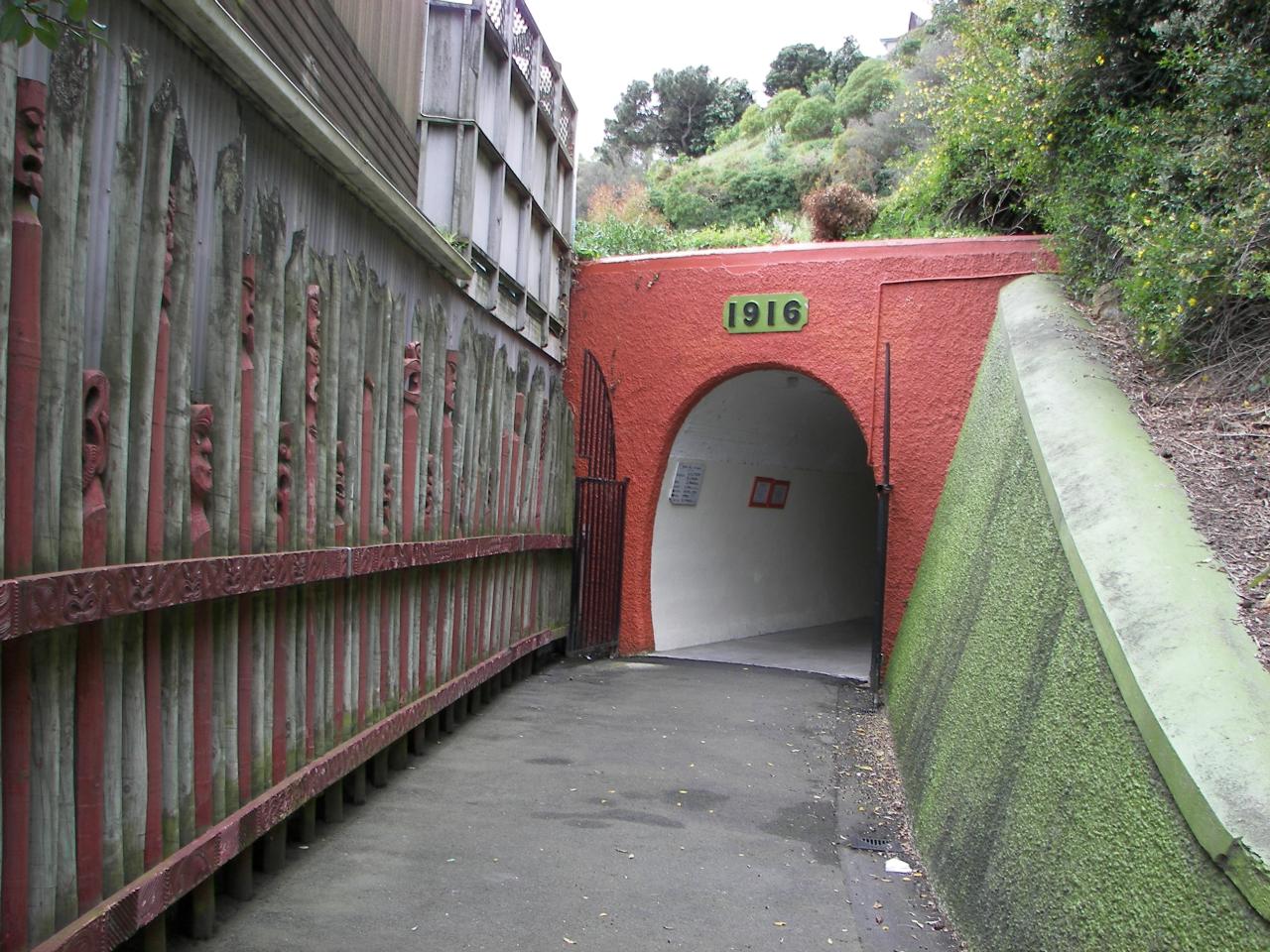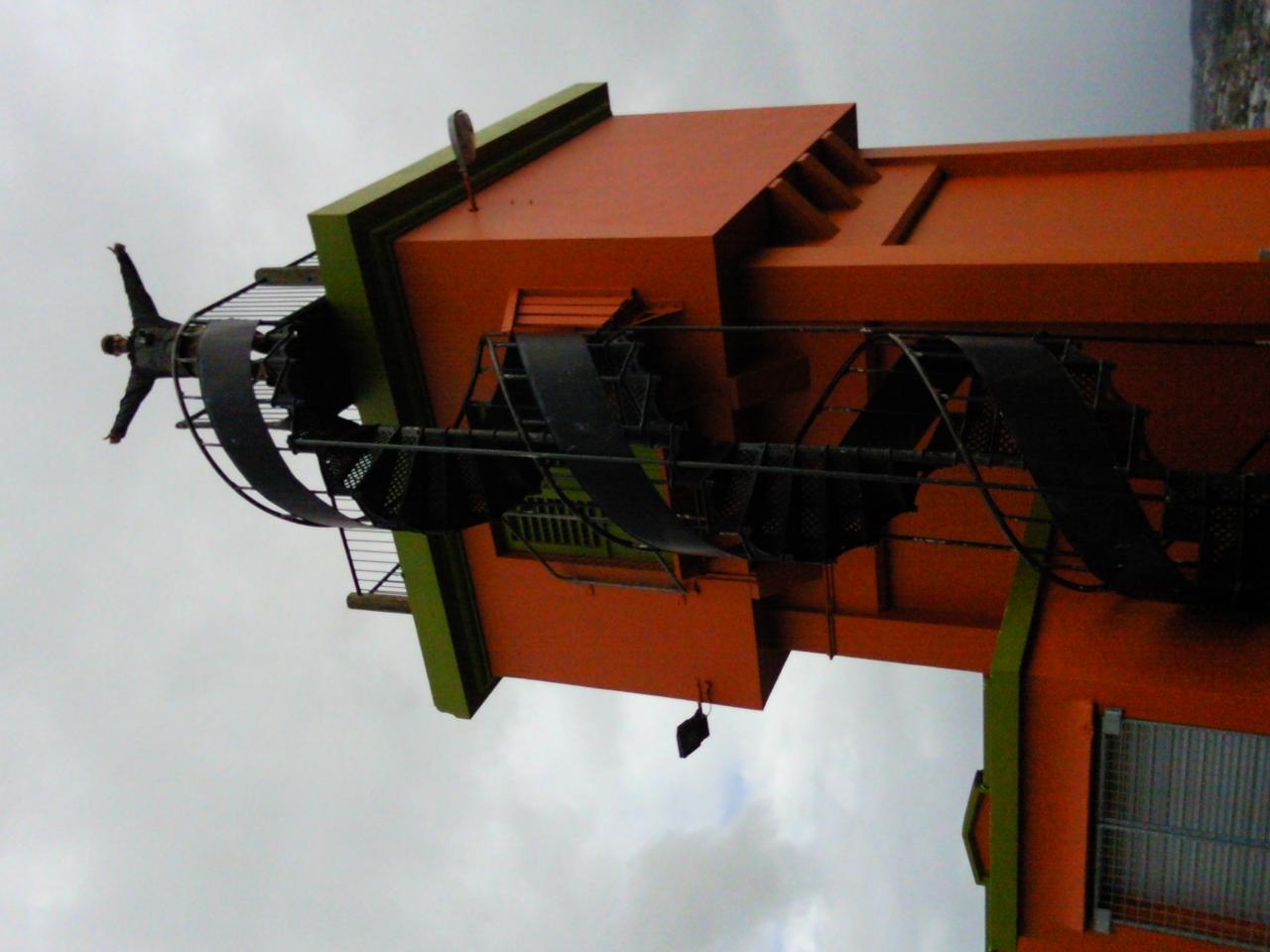Durie Hill Elevator on:
[Wikipedia]
[Google]
[Amazon]


 The Durie Hill Elevator is a public elevator in
The Durie Hill Elevator is a public elevator in
 Contractors Maxwell and Mann began construction in 1916. The structure consists of a 205 m long, 3 m high entrance tunnel (technically an
Contractors Maxwell and Mann began construction in 1916. The structure consists of a 205 m long, 3 m high entrance tunnel (technically an


 The Durie Hill Elevator is a public elevator in
The Durie Hill Elevator is a public elevator in Whanganui
Whanganui (; ), also spelled Wanganui, is a city in the Manawatū-Whanganui region of New Zealand. The city is located on the west coast of the North Island at the mouth of the Whanganui River, New Zealand's longest navigable waterway. Whangan ...
, on the North Island
The North Island, also officially named Te Ika-a-Māui, is one of the two main islands of New Zealand, separated from the larger but much less populous South Island by the Cook Strait. The island's area is , making it the world's 14th-largest ...
of New Zealand
New Zealand ( mi, Aotearoa ) is an island country in the southwestern Pacific Ocean. It consists of two main landmasses—the North Island () and the South Island ()—and over 700 smaller islands. It is the sixth-largest island count ...
. It connects Anzac Parade beside the Whanganui River
The Whanganui River is a major river in the North Island of New Zealand. It is the country's third-longest river, and has special status owing to its importance to the region's Māori people. In March 2017 it became the world's second natura ...
with the suburb of Durie Hill. It is ranked by Heritage New Zealand
Heritage New Zealand Pouhere Taonga (initially the National Historic Places Trust and then, from 1963 to 2014, the New Zealand Historic Places Trust) ( mi, Pouhere Taonga) is a Crown entity with a membership of around 20,000 people that advocate ...
as a Category 1 Historic Place, and is New Zealand's only public underground elevator.
Planning
When Durie Hill became part of Wanganui Borough in 1910, access was via a concrete staircase (a 191-step staircase still exists today). The Council needed to provide public transport to the hilltop settlement, however. Various solutions including a cable car were proposed, but an elevator up through the hill was decided upon, as "the most convenient, the safest, the most economical, and the most suited for the circumstances of the particular locality". The elevator and tunnel were proposed by ''Wanganui Chronicle
''The Whanganui Chronicle'' is New Zealand's oldest newspaper. Based in Whanganui, it celebrated 160 years of publishing in September 2016. It is the main daily paper for the Whanganui, Ruapehu and Rangitīkei regions, including the towns of Patea, ...
'' editor John Ball and his friend, Technical School
In the United States, a technical school is a type of two-year college that covers specialized fields such as business, finance, hospitality, tourism, construction, engineering, visual arts, information technology and community work.
Associa ...
engineering instructor Edward Crow. Ratepayers were not prepared to pay for the project, and only a quarter of the 80 or 90 families buying sections in the new suburb were interested in forming a cooperative, so Col. A. E. Wilson and his brother-in-law W. J. Polson formed the Durie Town Elevator Co. to build it.
Construction
 Contractors Maxwell and Mann began construction in 1916. The structure consists of a 205 m long, 3 m high entrance tunnel (technically an
Contractors Maxwell and Mann began construction in 1916. The structure consists of a 205 m long, 3 m high entrance tunnel (technically an adit
An adit (from Latin ''aditus'', entrance) is an entrance to an underground mine which is horizontal or nearly horizontal, by which the mine can be entered, drained of water, ventilated, and minerals extracted at the lowest convenient level. Adits ...
, rather than a tunnel, as it has only one entrance), a 65.8 m vertical elevator shaft, and a 9.7 m flat-topped tower at the summit, all consuming 2,500 tons of reinforced concrete. The entrance was buried by a landslide soon after excavation started, but construction was otherwise without incident. The British-built 40 horsepower machinery was installed by a firm who had already put 180 elevators into buildings throughout New Zealand, and had a capacity of 500 passengers per hour both ways. The Durie Hill Elevator was formally opened on 2 August 1919 (although the iron staircase to the tower roof had not yet arrived).
Operation
The Council initially set fares at 4d to go up and 2d to come down (3d and 1d for children). The 500 volts DC for the elevator came from the citytram
A tram (called a streetcar or trolley in North America) is a rail vehicle that travels on tramway tracks on public urban streets; some include segments on segregated right-of-way. The tramlines or networks operated as public transport are ...
system; in 1951 a mercury arc rectifier
Mercury commonly refers to:
* Mercury (planet), the nearest planet to the Sun
* Mercury (element), a metallic chemical element with the symbol Hg
* Mercury (mythology), a Roman god
Mercury or The Mercury may also refer to:
Companies
* Mercury ...
was installed to convert electricity from the 230 volt AC local distribution network to 500V DC after the tram system was removed. Operation of the elevator was passed to the Wanganui City Council on 1 June 1942; the city still operates it. The Council runs monthly checks of the elevator, and closes it for one day a year for a full inspection, as well as on Christmas Day. The previous operator, Zena Mabbot, had operated it since 1971. In 2021, after a three-month refurbishment, operation was taken over by a company set up by singer-songwriter Anthonie Tonnon
Anthonie Tonnon (born 1989) is a New Zealand songwriter, musician, public transport advocate and operator of Whanganui's historic Durie Hill Elevator.
Biography
Tonnon grew up in Dunedin and studied music and history at the University of Ot ...
.
The construction of an elevator allowed the development in 1920 of the first modern New Zealand suburb, Durie Hill Garden Suburb, planned by the architect Samuel Hurst Seager
Samuel Hurst Seager (26 June 1855 – 5 October 1933) was a notable New Zealand builder, draftsman, architect and town planner. He was born in London, England, in 1855, and as a boy emigrated to Christchurch, New Zealand, with his parents i ...
. Reliable transport to the hilltop was important before widespread automobile ownership; today the Durie Hill Elevator is as much a tourist attraction as a form of public transport, because of the panoramic views at the summit that can include both Mt Ruapehu
Mount Ruapehu (; ) is an active stratovolcano at the southern end of the Taupō Volcanic Zone and North Island North Island Volcanic Plateau, volcanic plateau in New Zealand. It is northeast of Ohakune and southwest of the southern shore of L ...
and Mt Taranaki
Mount Taranaki (), also known as Mount Egmont, is a dormant stratovolcano in the Taranaki region on the west coast of New Zealand's North Island. It is the second highest point in the North Island, after Mount Ruapehu. The mountain has a secon ...
.
References
{{reflistFurther reading
* Schrader, Ben (Sept 1993), 'Garden Cities and Planning', ''New Zealand Historic Places'' (43), 30–33. Individual elevators Buildings and structures in Whanganui Public transport in New Zealand NZHPT Category I listings in Manawatū-Whanganui Tourist attractions in Manawatū-Whanganui